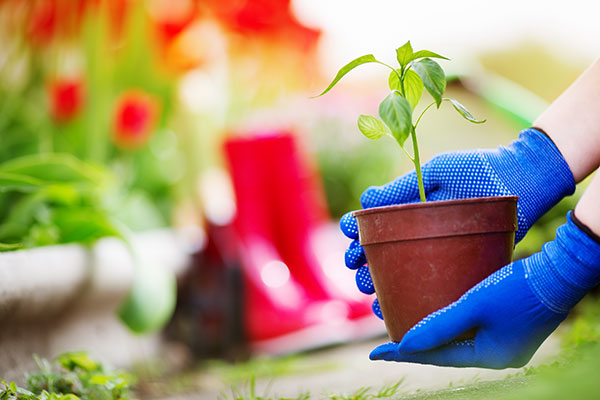Greenhouse
Explore the greenhouse at Bay College

Connecting Campus and Nature
The Bay College greenhouse has 800 square feet of growing space, including a small pond. The collection includes a diverse group of old and new world succulents. In addition to providing plant material to support instruction at the College, the greenhouse propagates a variety of plants to support campus and area school gardens, as well as various community garden projects. Past projects have included Esky Grow, the Escanaba Migratory Bird Enhancement Initiative, and monarch habitat restoration projects in the Hiawatha National Forest. A priority is providing a local source of native plants for area gardeners interested in our local flora.
Annual Plant Sale
The annual Bay College greenhouse plant sale is held each spring during the last week of the winter semester. The sale focuses on native perennial wildflowers grown from locally collected seed. A limited selection of other perennials, as well as several good performing varieties of tomatoes, peppers, herbs, and annual flowers are usually available. Proceeds from the sale go to support the STEM (Science Technology, Engineering and Math) Club, the annual STEM Colloquia Series, and the continuing operation of the greenhouse, including production of plant stock for the projects described above.
The sale is scheduled for Friday, May 3, 9:00 AM - 5:00 PM at the greenhouse and biology lab (room 116) in the Math Science Building. The sale will include a selection of native wildflowers, perennials, tomatoes, peppers, and herbs. Pricing starts at $25.00 per flat (mix and match), and $1.00 per individually potted plant. For more information, email blackb_FROM_BAY_COLLEGE or call 906-217-4051.
Native Plant Guides
- Bay College Native Plant Information
- Gardening with Native Plants: A Guide for Michigan's Upper Peninsula
Plant Sale Offerings
Native plants are indigenous to a particular habitat within a specific region. They are adapted to local conditions and have natural defenses to diseases and insect pests. Importantly, they provide habitat and food for butterflies, hummingbirds, songbirds, and beneficial insects. When planting, match the plants with their native conditions as much as possible. Once established, they will not require supplemental watering. Native upland dry and dry prairie plants can withstand extended periods of drought.
- Black eyed Susan
- Butterfly weed, Asclepias tuberosa
- Columbine
- Coreopsis lanceolata
- Goldenrod - Canada
- Goldenrod – Flat top
- Goldenrod - Showy
- Green headed coneflower
- Grey headed coneflower
- Heliopsis (tickseed or false sunflower)
- Medicine Hat Coneflower
- Milkweed – Common Asclepias syriaca
- Milkweed – Red or swamp
- New England Aster
- Pearly Everlasting
- Blazing Stars: Rough
- Sneezeweed
- Wild bergamot (Monarda)
- Woodland Sunflower
- Cup plant-Silphium
- Gallardia- Blanket Flower
- Purple coneflower (Echinacea purpurea & pallida, neither native)
- Shasta Daisy
- Big Bluestem
- Cauliflower Snow crown hybrid
- Cabbage- Stonehead hybrid
- Brussels Sprouts – Franklin Hybrid
- Asparagus – Mary Washington
- Florence Fennel – Antares hybrid
- Sweet Italian Basil
- Cilantro
- Early Jalapeno
- Habanada
- Hungarian Hot Wax
- King of the North – Sweet green
- Red Belgian Sweet Pepper
- Sweet Banana
- Tomato
- Celebrity Hybrid semi-D
- Early Girl hybrid I
- Martino’s Roma I
- Sunsugar hybrid cherry I
- Sweet Million hybrid cherry I
- Butternut - Waltham
- Celebrity Hybrid semi-D
- Early Girl – I
- Wisconsin 55 - semi-D
- Sun Sugar Hybrid (cherry)- I
- Sweet Millions (cherry) - I